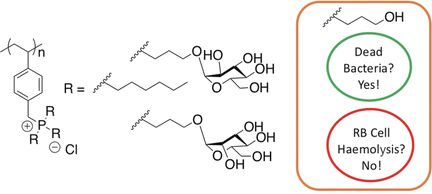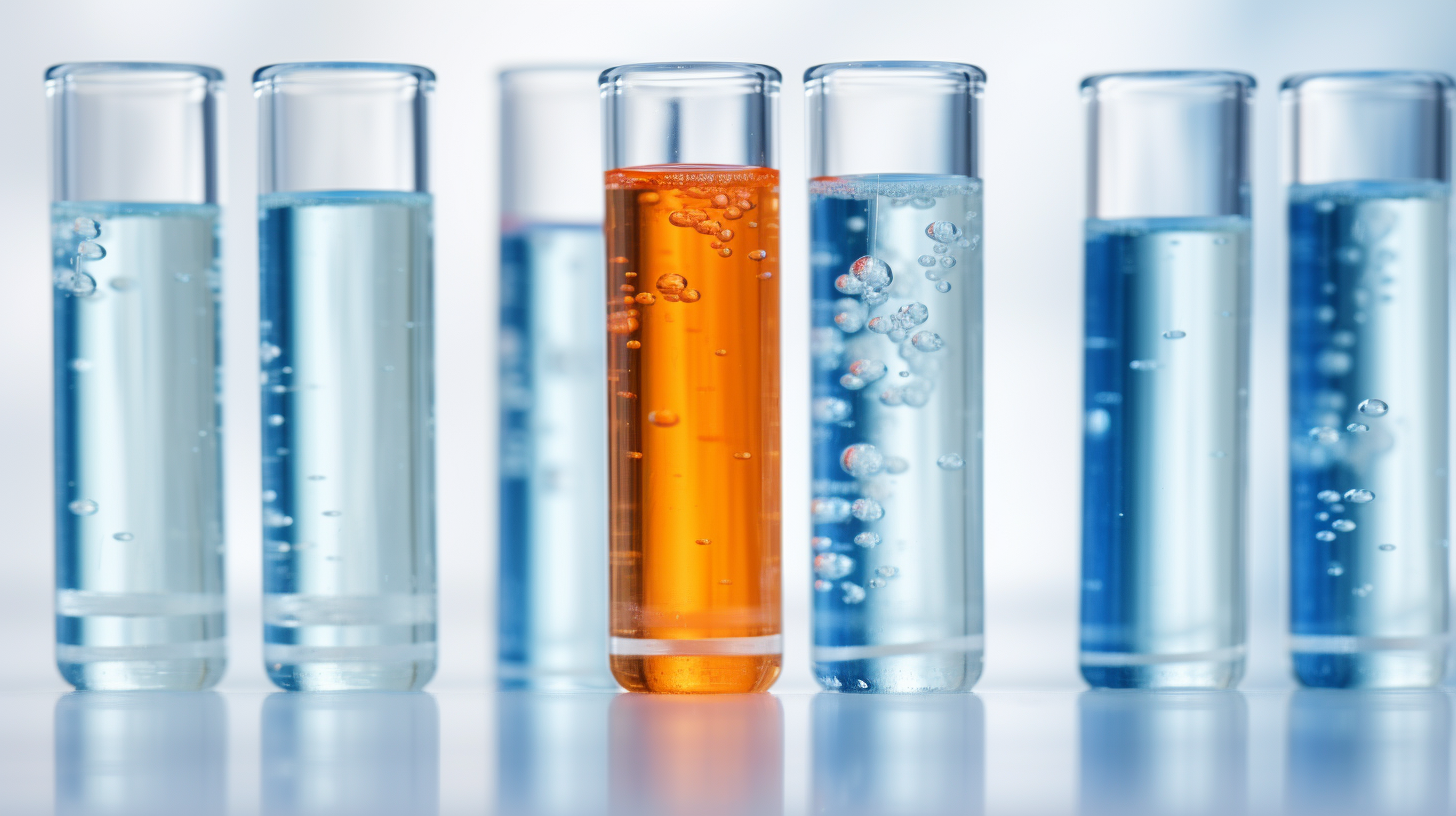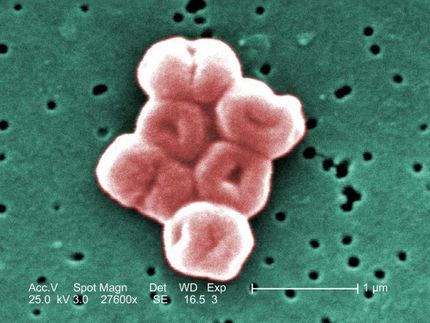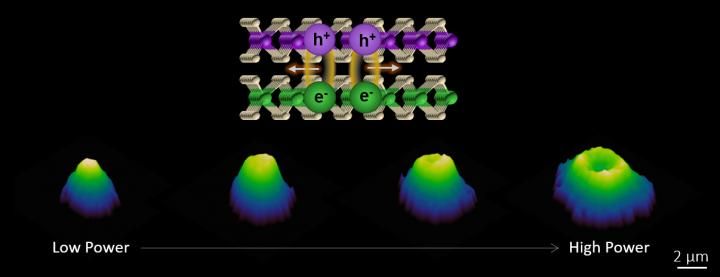Antibacterial Polymers
Surprising antibacterial activity and selectivity of hydrophilic phosphonium polymers
Artificial polymers, like antibiotic peptides, need both hydrophobic and hydrophilic domains in their molecular structure to exert antibacterial activity. Now, researchers from Canada have synthesized a phosphonium polymer that challenges this view. As outlined in the journal Angewandte Chemie, their polymer salt contained no hydrophobic alkyl chains but still acted as an extraordinarily efficient biocide. A re-evaluation of established strategies in antibiotics polymer research might be necessary.

© Wiley-VCH
To combat multiresistant bacteria and discover new antibiotics, scientists increasingly turn to the design and exploration of short artificial polymers. As these polymers can mimic the powerful peptide antibiotics, Paul J. Ragogna and Beth Gillies at Western University, London, ON (Canada), and their groups focus on phosphorus-containing polymers, the polyphosphoniums. Their molecular structure consists of a hydrocarbon backbone and a positively charged phosphorus center in every repeat unit. A balanced display of hydrophobic alkyl chains and positive charges was considered essential for effective adhesion to bacterial cells and membrane disruption. Envisaging still more effective cell lysis, the scientists started to fine-tune this amphiphilic nature of the polyphosphoniums.
Varying the relative content of hydrophobic and hydrophilic functional groups, the Western team introduced mannose sugars in the polymer. The sugar was intended to act as a “bait” to attract bacteria, according to the authors, but they found that this plan failed. “Our initial hypothesis that the mannose-containing phosphonium polymer ManPP would provide exceptional targeted activity proved incorrect,” they wrote. However, another functional group was extremely successful—and took the researchers by surprise.
They expected that the short alcoholic chain hydroxypropyl would not give any hydrophobicity to the polyphosphonium compound, thus producing neither bacterial cell lysis nor hemolysis of red blood cells. The degree to which a compound destroys red blood cells indicates the drug’s selectivity against mammalian cells. Thus, the hydroxy-modified polyphosphonium was intended for use as a control. However, it killed the bacteria with unprecedented activity while leaving red blood cells intact, the authors recorded. “This is an unprecedented result in the context of the literature on antimicrobial polyonium or related materials,” they wrote.
Their results signify that hydrophobic alkyl chains are no pivotal functional groups to attain cell lysis ability in phosphonium salt polymers. Instead, the authors hypothesize that the polystyrene backbone or the single terminal hydrophobic group of the synthesized polymers also play a role. These findings towards bactericide polymer structures deserve further investigation. A re-evaluation of the established models may be necessary. This is interesting news in the quest to design new antibacterial substances.
Original publication
Other news from the department science
These products might interest you
Most read news
More news from our other portals
See the theme worlds for related content
Topic world Digestion
Sample digestion is a critical step in chemical analysis that often determines the success or failure of an investigation. It involves the targeted transformation and preparation of a sample to make the components of interest accessible for analysis. Various methods such as thermal, chemical or enzymatic digestion are used to dissolve matrix components, remove unwanted components and release target substances.

Topic world Digestion
Sample digestion is a critical step in chemical analysis that often determines the success or failure of an investigation. It involves the targeted transformation and preparation of a sample to make the components of interest accessible for analysis. Various methods such as thermal, chemical or enzymatic digestion are used to dissolve matrix components, remove unwanted components and release target substances.































































